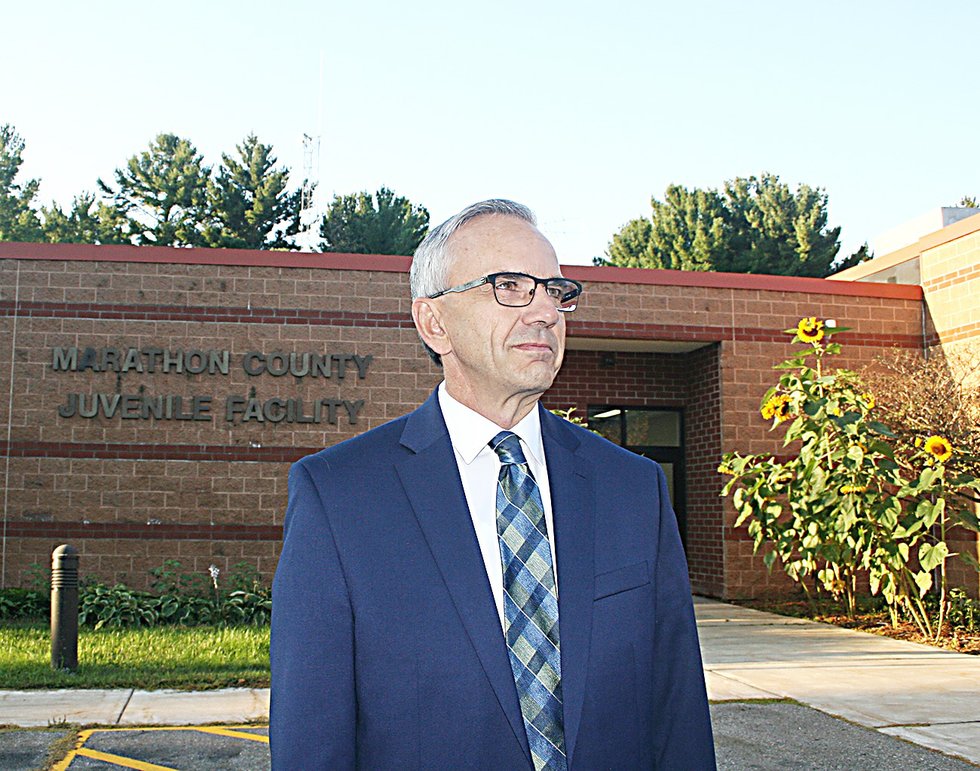(First published in the September 13, 2018 issue of City Pages)
Savings would fund a communications upgrade in dispatch

unknown
County Administrator Brad Karger: “Nobody was excited about idea… (but) we need a new plan.”
Marathon County officials are exploring an option to close its youth detention facility in order to help pay for a needed extra emergency channel in dispatch, says County Administrator Brad Karger. Personnel costs for the secure juvenile facility are roughly $748,000 annually, says Karger. “That would be enough to fund opening the police channel.”
The facility at 7025 Packer Dr. in Wausau currently has 20 beds and serves as a secure holding for kids in the juvenile justice process. It’s staffed by nine officers who have been assured that if the shelter closes, they wouldn’t lose their jobs, says Karger, but would be transferred to open jobs in the jail and dispatch.
Karger stresses that the county won’t save money, but rather will shift funds from a lower priority item (juvenile detention) to a higher priority (emergency communication.) “It’s always better to keep kids closer to home, but is that more important than a police channel?” Karger says.
The first six positions at the secure detention center will attrition out and be replaced with dispatcher positions, says Karger. “The savings from the remaining positions will be applied to paying for our kids being housed in out-of-county secure detention facilities and the cost of transporting them.”
Karger believes that additional money will be needed to cover out-placement costs, but the net result “will be a lot less than just adding $300,000 to $400,000 to the 2019 budget to fund a new police communications channel.”
The county’s juvenile facility is the northernmost facility of its kind in Wisconsin. Its closure would force surrounding counties that have been housing their youth here to find other options. In 2017 Marathon County accepted juvenile placements from 30 other counties, the top give including Ashland, Langlade, Lincoln, Oneida and Shawano.
Karger discussed the option with the county’s Public Safety and Executive committees at their recent meetings. “Nobody was excited about idea,” he says. “We thought we could put that off one more year, but we can’t. We need a new plan.”
The county is creating a task force to look at data behind closing the juvenile facility. Other things could influence the numbers, says Paul Mergendahl, deputy jail administrator and juvenile detention superintendent. For example, more 17-year-olds being brought back to the juvenile justice system; or a new law that directs the state Department of Corrections to close Lincoln Hills School and Copper Lake School corrections facilities in Irma (where juveniles convicted of serious offenses are housed) and create new facilities elsewhere.
It should be noted that the state has come under fire for troubles at Lincoln Hills (for boys) and Copper Lake (for girls). Those issues trace back to centralizing all juvenile offenders in Wisconsin at this sprawling, northern campus while closing other facilities closer to the kids’ homes.
Karger says Marathon County’s task force will look at all costs, alternatives, numbers and trade-offs before making a final recommendation on the fate of the county’s secure detention center.
“Because of the crisis within dispatch and budget the way it is, we have to find resources in the existing budget,” says Craig McEwen, chair of the county Public Health and Safety Committee. “I wish we didn’t have to do that and I wish we could come up with the money to fund the dispatchers, but there aren’t a lot of options.”
Also potentially facing closure in the near future: the county’s youth shelter, an eight-bed facility for kids in crisis located right next to the secure detention building. That possibility will be examined next year, says Karger. “For the shelter, we may look at privatizing.”




